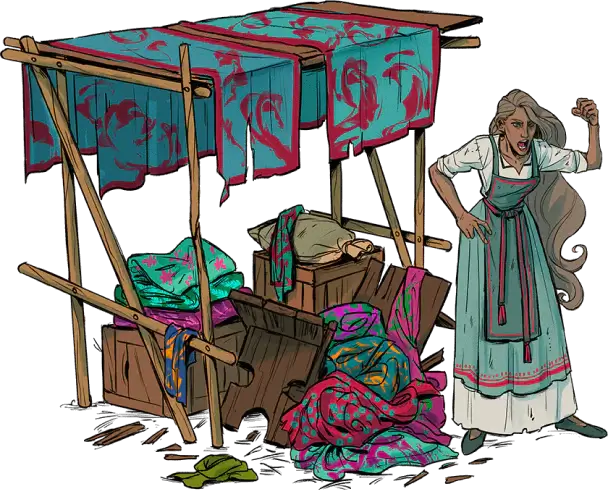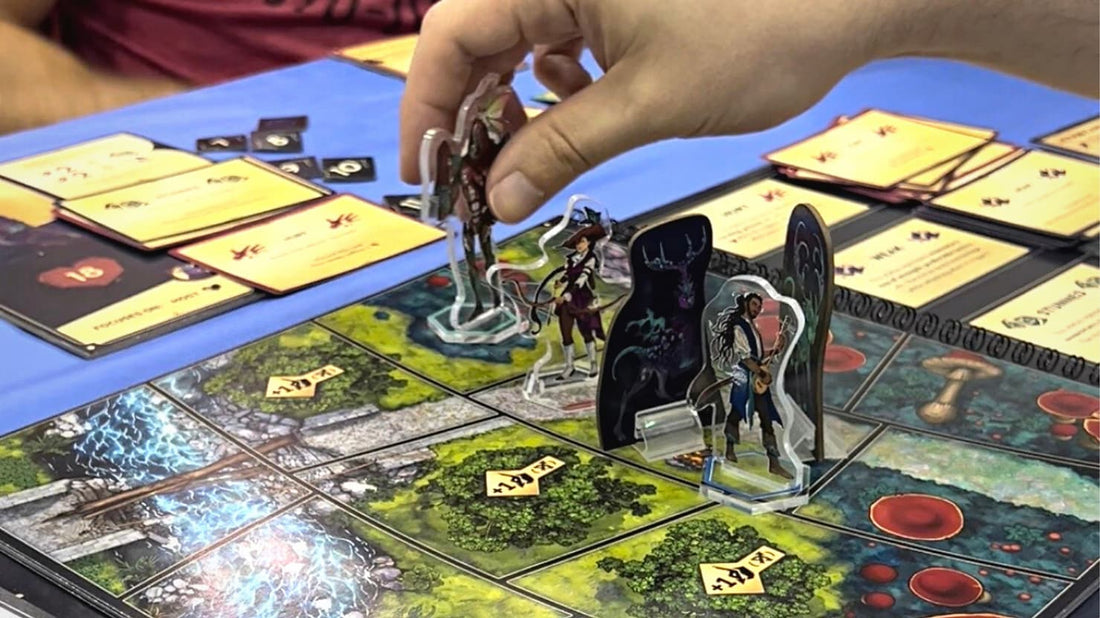Designer Kevin Wilson discusses the movement and map system in Kinfire Chronicles: Night's Fall, and how the close quarters make for interesting combat choices.

Quest 2 being played at Gen Con
One of my central goals for Kinfire Chronicles was to make sure that at no point would it become repetitive or boring. When designing the game system, we worked to make sure that there were a number of very flexible levers that we could pull to do things in different ways, letting us create a wide variety of quests and combats.
But I wanted to do this and still keep the play-time of each quest down to a “week night” length rather than a “weekend” length. Fortunately, this wasn’t my first rodeo, and I knew exactly where that game length needed to be cut - walking. The number one time waster in dungeon-crawling adventures is just walking around a map, whether it be a square or hex grid. And worst of all, movement largely exists as a ‘stop sign’ for players - “You are too far away to attack that enemy.” Kinfire Chronicles didn’t need all that dead air to do what I wanted it to, so I set about reducing movement in combat down to its barest essentials - why do I want to stand here, and why do I want to move away from here?
I knew early on that I wanted to have reasonably minimalistic maps of fewer large spaces that integrated well with the map art, and I wanted each map’s spaces to be custom designed to create different ‘flows’ of battle. If you look at the first battle’s map, it’s the bare minimum to teach the players how combat works. The Seekers start 2 spaces away from the wyvern, and in the combat example, they are guided through the first two turns of battle in a way that demonstrates first ranged and then melee attacks. These are, again, stripped down to the simplest possible structure - melee attacks hit an enemy in your space, ranged attacks hit an enemy exactly one space away (more, or allowing ranged attacks to target your own space would be too flexible as a base rule). There’s no terrain on this first map, because the wyvern battle exists to get your feet wet before throwing more complexity at you.

When in doubt, make sure all Seekers are visible for the camera
That said, even the first battle illustrates how the system answers the core two questions of a movement system - why do I stay here, and why do I move over there? You want to move close to the wyvern to attack it, and you want to move away from your current space typically to avoid having multiple Seekers caught in the wyvern’s blast attack. Several of the Seekers also have movement-based abilities or actions, such as Asha’s Opportunist ability, which wants her in the same space as an enemy, or her Mule Kick action, which has extra effects if she moves before attacking with it. Valora wants to move around to hand out armor, Khor wants to stay close enough to absorb damage for others, and so on. Even though the map is small, it’s strategically a knife fight in a phone booth - your movements matter a lot, but your options are limited enough that you don’t spend forever overthinking them.

Just a few action cards that utilize movement
Later on, you get introduced to terrain, which adds further context to the two central questions. There’s beneficial terrain, like cover, that tries to convince you to move into and stay in that space, and there’s harmful terrain, like fiery spaces that inflict Hurt statuses, that try to convince you to stay out of those spaces. Sometimes enemies may force you into harmful terrain as part of their abilities. Sometimes enemies will take advantage of beneficial terrain. These tools are all used to generate variety and challenge as you master the system and gain more powerful actions to use.

If you stand in fire, you're gonna get burned
You start gaining more control over how the enemies move, while they might gain the ability to alter the map itself. Shove enemies into the same space before unleashing a blast attack that injures all of them. Draw an enemy’s focus and then hotfoot it to the other side of the map. Stand together for teamwork bonuses, then separate to avoid enemy blast attacks. Get a running start to cause an attack to do more damage, or hold still in order to unleash a devastating smash. These are the interesting parts of “figures on a map” systems, and the Kinfire Chronicles movement system does all of that without adding an extra hour or two of walking. I think you’ll be pleasantly surprised. Now, here’s your knife - get in that phonebooth and show that wyvern who’s boss!



